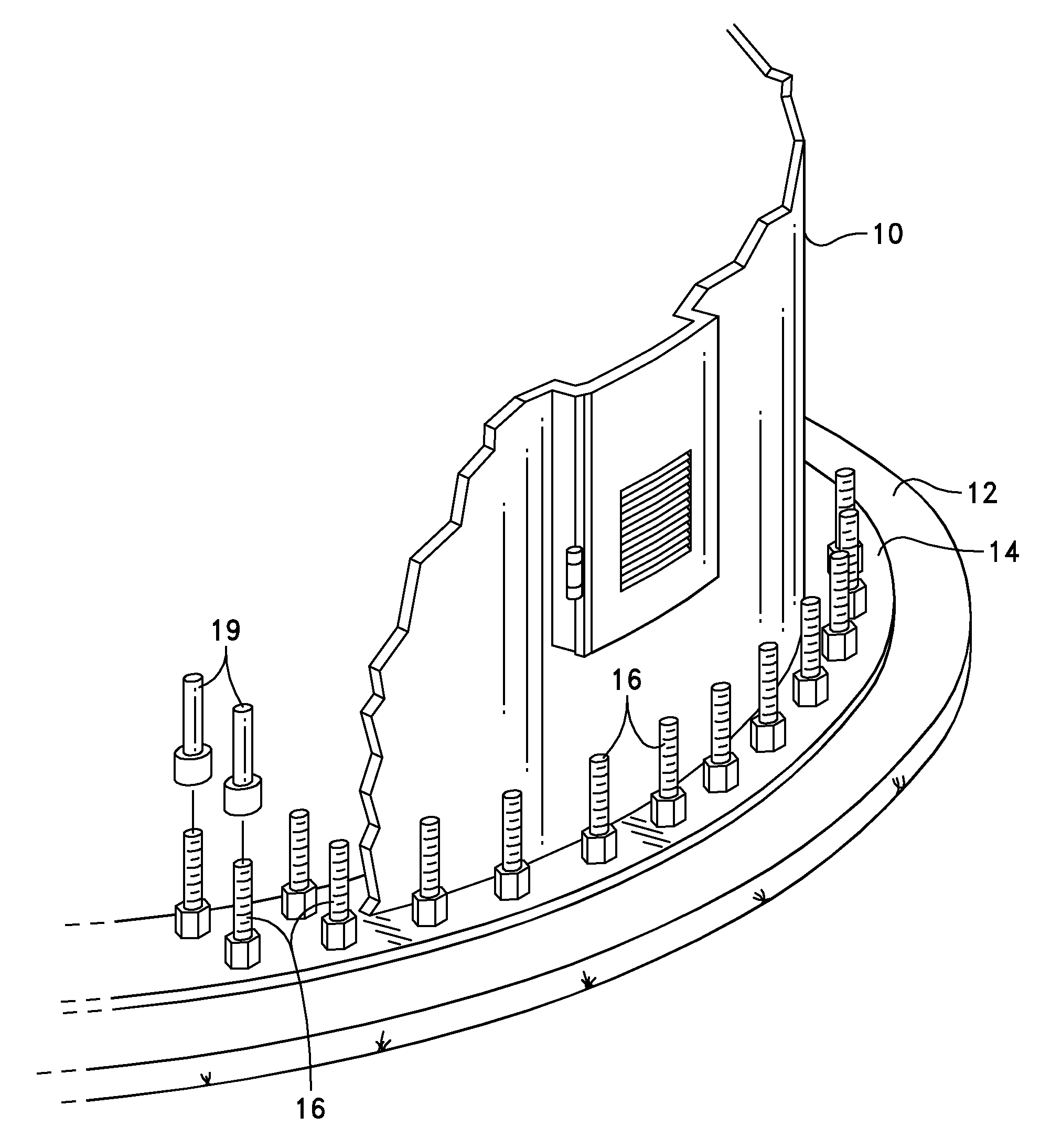Foundation for a Wind Turbine Utilizing a Slurry of Low Viscosity Grout
a wind turbine and grout technology, applied in the field of concrete foundations, can solve problems such as damage to surrounding grout, and achieve the effect of reducing equipment and manpower and speeding up the erection of the turbin
- Summary
- Abstract
- Description
- Claims
- Application Information
AI Technical Summary
Benefits of technology
Problems solved by technology
Method used
Image
Examples
Embodiment Construction
Prior Art Bolt Protection Devices
[0035]Referring specifically to the figures, FIG. 1 depicts an embodiment of a known foundation 100 utilized for installation of a relatively tall vertical structure, such as a wind turbine. It is to be appreciated that while the disclosed method and apparatus may be utilized to obtain a foundation 100 such as that depicted in FIG. 1, the procedure for obtaining the foundation is entirely different from the known methods. Foundation 100 comprises a bore hole 120, an outer boundary shell 140 and an inner boundary shell 160, each typically fashioned of corrugated metal pipe (“CMP”), set within the bore hole hole. An inner ring 180 of bolts 16 and an outer ring 200 of bolts 16 are disposed within the annulus formed between the outer boundary shell 140 and the inner boundary shell 160, with the bolts 16 anchored at the lower end of the bore hole 120 to an inbed plate 220. The annulus between the outer boundary shell 140 and the inner boundary shell 160 i...
PUM
 Login to View More
Login to View More Abstract
Description
Claims
Application Information
 Login to View More
Login to View More - R&D
- Intellectual Property
- Life Sciences
- Materials
- Tech Scout
- Unparalleled Data Quality
- Higher Quality Content
- 60% Fewer Hallucinations
Browse by: Latest US Patents, China's latest patents, Technical Efficacy Thesaurus, Application Domain, Technology Topic, Popular Technical Reports.
© 2025 PatSnap. All rights reserved.Legal|Privacy policy|Modern Slavery Act Transparency Statement|Sitemap|About US| Contact US: help@patsnap.com



